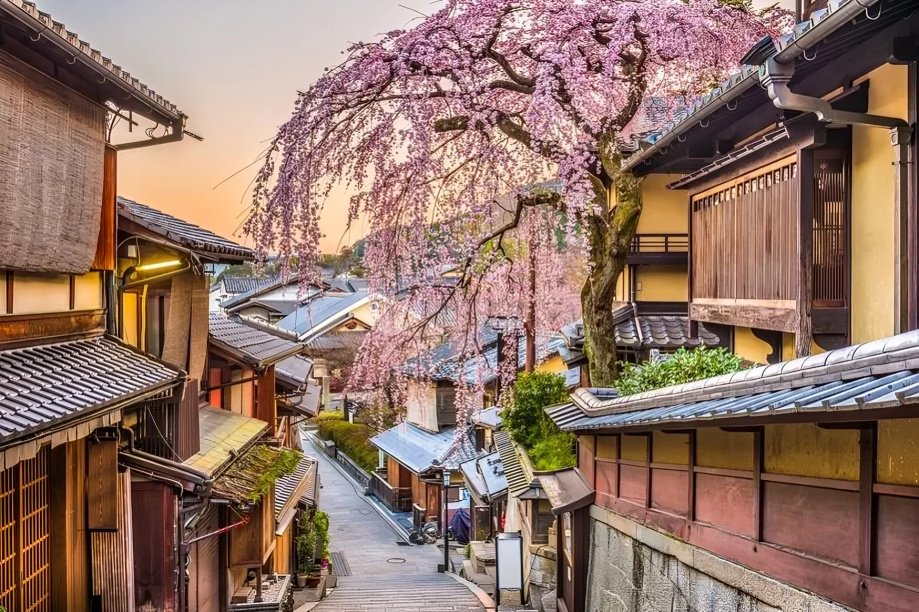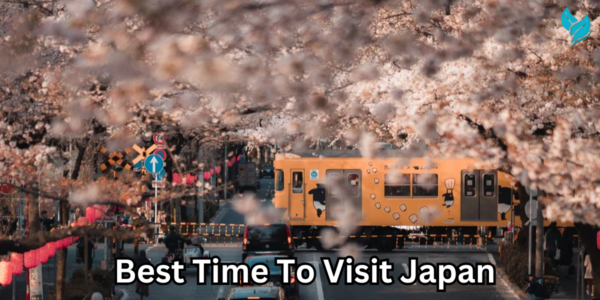Japan is a country that offers something unique and captivating for every traveler, no matter the season. From stunning cherry blossoms in spring to vibrant autumn foliage, and from bustling summer festivals to the serene winter landscapes, Japan’s charm is evident year-round. However, determining the best time to visit Japan depends on what you want to experience during your trip. In this article, we’ll explore the highlights of Japan’s seasons and provide insights into when is truly the best time to visit this beautiful country.
Exploring Japan’s Seasons
Japan experiences four distinct seasons, each with its own unique appeal. Let’s dive into what makes each season special.
Spring (March to May) – The Best Time for Cherry Blossoms
Spring is often considered the best time to visit Japan because of the iconic cherry blossoms, or sakura, which bloom from late March to early April. The sakura viewing, or hanami, is a cherished tradition in Japan where locals and tourists gather in parks to enjoy the delicate beauty of these flowers. Popular spots for cherry blossom viewing include:
- Ueno Park in Tokyo
- Maruyama Park in Kyoto
- Mount Yoshino in Nara
In addition to cherry blossoms, the pleasant weather with temperatures ranging from 10°C to 20°C makes it an ideal time to explore Japan’s outdoor attractions. Spring is also when festivals like the Kyoto Geisha Dance and the Takayama Festival are held, further enriching the cultural experience.
Summer (June to August) – Best Time for Festivals and Adventure
While summer in Japan can be hot and humid, it’s the best time to visit if you love festivals and outdoor activities. Japan comes alive with vibrant festivals during these months, such as the Gion Matsuri in Kyoto and the Nebuta Matsuri in Aomori. Fireworks festivals, known as hanabi, also light up the summer nights across the country.
Additionally, summer is a great time for hiking and beach activities. Mount Fuji, Japan’s highest peak, is open for climbing from July to early September. If you’re a fan of the outdoors, heading to Japan’s northern island, Hokkaido, provides cooler temperatures and stunning flower fields, especially the lavender fields of Furano.
However, it’s worth noting that June and July are part of Japan’s rainy season, so pack accordingly if you plan to visit during this time.
Autumn (September to November) – The Best Time for Autumn Foliage
Autumn is another contender for the best time to visit Japan, as the entire country transforms into a canvas of red, orange, and yellow hues. The autumn foliage, or koyo, is particularly spectacular in late October and November. Famous spots for enjoying this scenery include:
- Arashiyama Bamboo Grove in Kyoto
- Nikko National Park in Tochigi
- Lake Kawaguchi near Mount Fuji
In addition to the beautiful scenery, the weather is mild and comfortable, making it ideal for sightseeing. Autumn also offers plenty of food festivals, where you can savor seasonal delights like chestnuts, mushrooms, and sweet potatoes. The Shichi-Go-San Festival, a traditional rite of passage for children, is also celebrated in November, giving visitors a glimpse into Japanese culture.
Winter (December to February) – The Best Time for Snow and Hot Springs
For travelers who love winter sports or are looking for a serene escape, winter is the best time to visit Japan. The country’s northern regions, particularly Hokkaido, are known for their world-class ski resorts. Popular destinations like Niseko, Furano, and Hakuba offer excellent powder snow for skiing and snowboarding.
Even if you’re not into winter sports, Japan has plenty to offer during the colder months. One of the most relaxing experiences is soaking in an onsen (hot spring) while surrounded by snow. The hot springs in places like Hakone and Nagano offer breathtaking views, especially in winter.
Winter is also when you can witness unique traditions like the Sapporo Snow Festival, where large ice sculptures dominate the landscape. For those looking for a quieter time to explore Japan’s temples and shrines, winter offers fewer crowds, making it an ideal season for peaceful sightseeing.
Factors to Consider When Choosing the Best Time to Visit Japan
While each season in Japan has its own appeal, several factors can help you determine the best time to visit Japan based on your personal preferences.
Weather Preferences
If you prefer milder temperatures and pleasant weather, spring and autumn are the ideal times to visit Japan. On the other hand, if you’re ready for hot, humid conditions, summer delivers a vibrant cultural experience with its festivals.
Budget and Crowds
Spring and autumn are peak tourist seasons in Japan, particularly during the cherry blossom and autumn foliage periods. As a result, accommodation and flight prices rise, and popular tourist attractions attract larger crowds.
Special Events and Festivals
Japan’s calendar brims with cultural events and festivals throughout the year, making it ideal to plan your trip around specific events that interest you. If you’re passionate about witnessing cherry blossoms, spring is a must. For festival enthusiasts, summer offers a lively atmosphere, while winter brings magical snow festivals.

FAQs
What is the best month to visit Japan for cherry blossoms?
The best month to visit Japan for cherry blossoms is typically late March to early April. This is when the cherry blossoms are in full bloom in most parts of the country, particularly in cities like Tokyo, Kyoto, and Osaka.
When is the best time to visit Japan for skiing?
The best time to visit Japan for skiing is from December to February, with January and February offering the best powder snow conditions. Popular ski destinations include Niseko in Hokkaido and Hakuba in Nagano.
Is summer a good time to visit Japan?
Yes, summer is a good time to visit Japan if you’re interested in festivals, outdoor activities, and exploring less crowded regions like Hokkaido. However, be prepared for hot and humid weather, especially in cities like Tokyo and Osaka.
When is Japan less crowded?
Japan is less crowded during the off-peak months, such as late winter (January and February) and early summer (June, outside of the rainy season). These months also offer more affordable accommodation and fewer tourists at popular sites.
What is the rainy season in Japan?
The rainy season in Japan typically lasts from June to mid-July. While it can still be a good time to visit, especially in regions like Hokkaido, it’s important to prepare for occasional rain showers during this period.
Conclusion
Choosing the best time to visit Japan ultimately depends on your interests and what you want to experience during your trip. Whether you’re drawn to the cherry blossoms of spring, the festivals of summer, the autumn foliage, or the snowy landscapes of winter, Japan offers unforgettable experiences year-round. By considering factors like weather, budget, and seasonal events, you can plan the perfect trip to this enchanting country.










